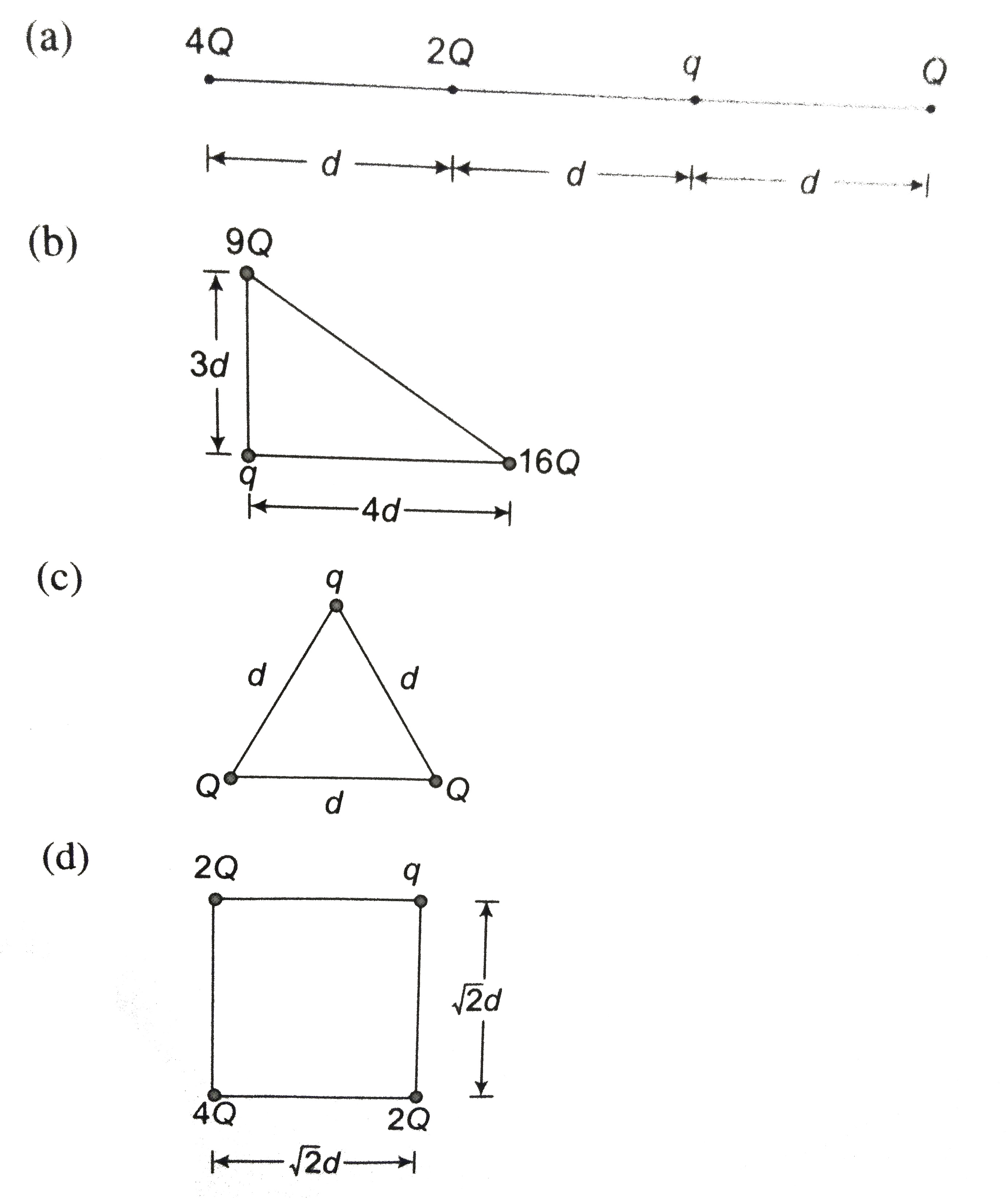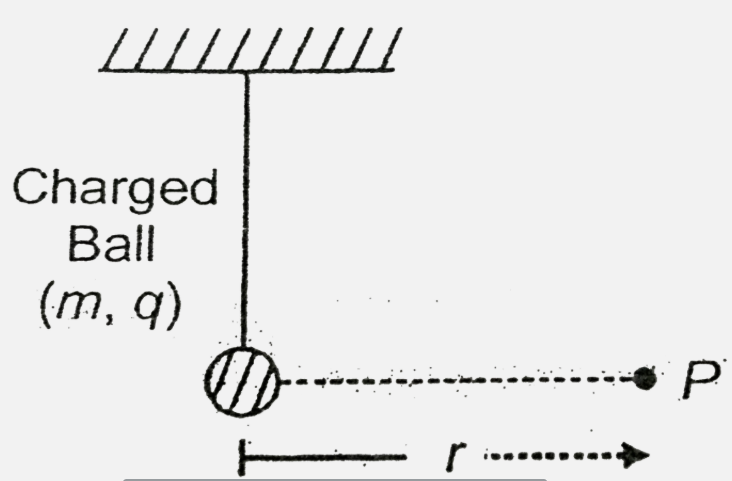Find the net electric force on charge in the following cases , take .
(a) 
(e) The point charges are placed at . A point charge is placed at origin.
Electric force on :
Due to , towards right
Due to , towards right
Due to , towards left
Resultant force on :
, towards right
(b) Electric force on :
Due to , along
Due to , along
Resultant force on :
(c) Electric force on :
Due to
Due to
Resultant force on :
(d) Electric force on :
Due to , along AB
Due to , along
Due to at D , ,along
Resultant force on :
Resolving forces along and axes
Resultant force is given as
OR
The resultant of two perpendicular forces will be along the third force . Hence , resultant of three forces is .
(e ) The electric force on due to charges will be towards left.
Force on :
Due to
Due to
Due to
Due to
Net force on :









Topper's Solved these Questions
Similar Questions
Determine electric field at point P or O in the following cases , take 14π∈0.Qd2=E0.
(a)
(b)
View Solution(a) Two point charges Q and 16Q are fixed at separation d. Where should a third point charge be placed between them so that it experiences no force I.e. in equilibrium ?
(b) In the previous problem , if we replace Q by −Q , where should the third charge be placed on the joining the charges so that it is equilibrium ?
(c ) Three point charges Q,q and Q are placed at x=0,x=d/2 and x=d. Find q in terms of Q so that all charges are in equilibrium.
(d) Two point charges 9Q and 25Q are placed at separation d. Where should a third charge q be placed between them so that all charges are in equilibrium ? Also find the value of q and its nature.
View Solution
Knowledge Check
n charges Q,4Q,9Q,16Q…. are placed at distance of 1,2,3….. metre form a point 0,on the same straight line .The electric intensity at 0 is
AQ4πε0n2BQ4πε0nCInfinityDnQ4πε0Electric potential is a scalar quantity. Due to a point charge charge q at distance r, the potential is given by V=q4π∈0r. A point charge q is placed at (3a,0) and another charge −2q is placed at (−3a,0).
At how many points on the x-axis, (at finite distance) electric potential will be zero?A1B2C3D4
A positive point charge q1 is placed at (a,0) and another positive point charge q2 is placed at (0,a) . Find the force acting on q1.
View Solution(a) The charges each Q are placed at x−d,2d,4d,…∞. Find electric potential at origin O.
(b) A charge +Q is placed at each of the points x=d,x=3d,x=5d,…..,∞ on the x-axis , and a charge −Q is placed at each of the points x=2d,x=4d,x=6d,...,∞.Find the electric potential at the origin O.
View SolutionThe electric field at point P due to a charged ball is given by
Ep=14πε0qr2
To measure 'E' at point P, A test charge q0 is placed at point P and measure electric force F upon the test charge. Check whether Fq0 is equal to 14πε0qr2 or not .

View SolutionFour point charges Q , q Q and q are placed at the corners of a square of side 'a' as shown in the Fig. Find the
resultant electric force on a charge Q
View SolutionThe electric field E due to a point charge at any point near it is defined as
E=limq0→0Fq0
Draw the electric field lines of a point charge Q when (i) Q>0,and(ii)Q<0.
View SolutionTwo charges q1andq2 are placed at (0,0,d) and (0,0,-d) respectively. Find locus of points where the potential is zero.
View Solution